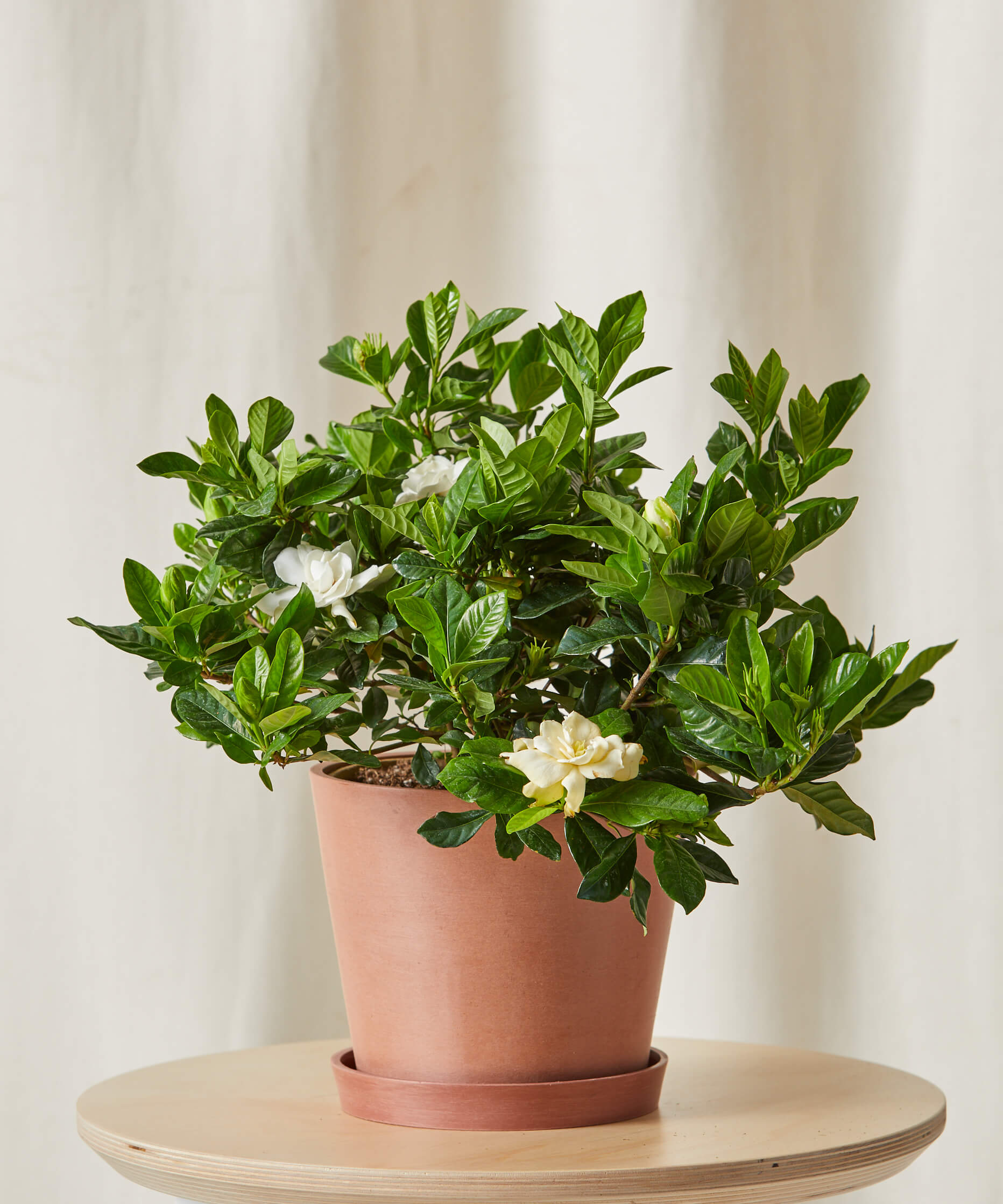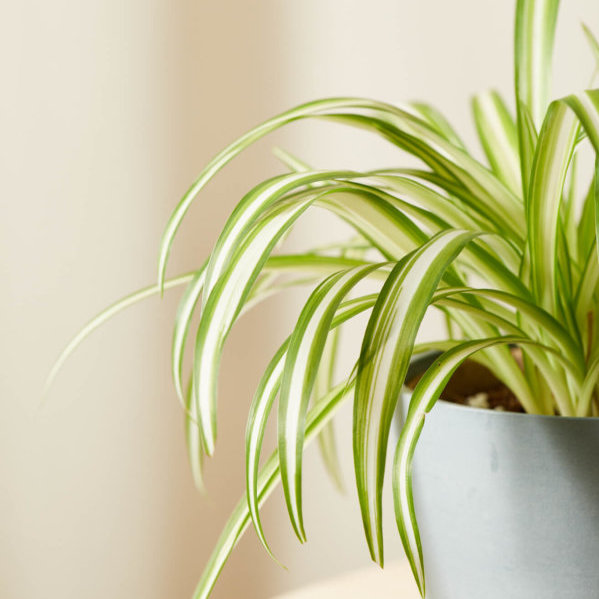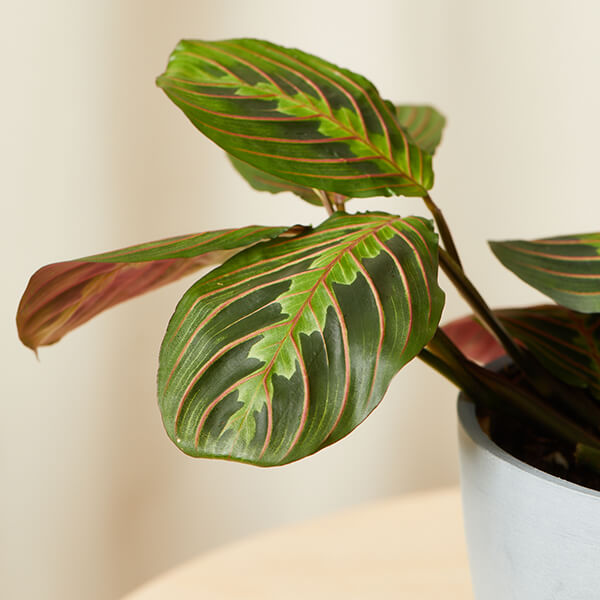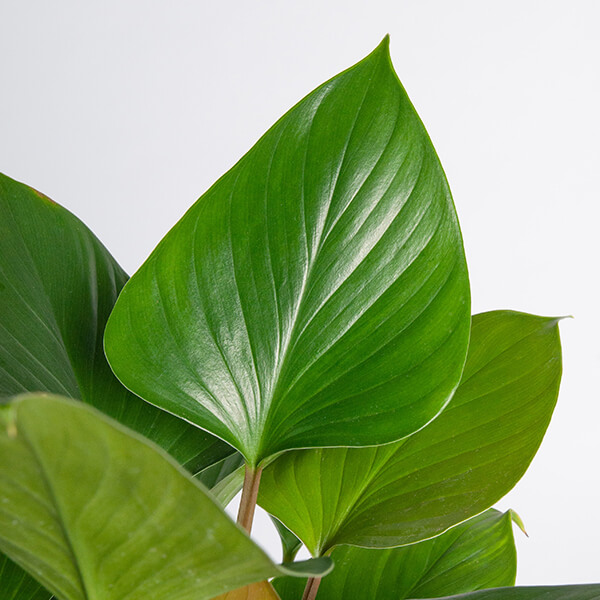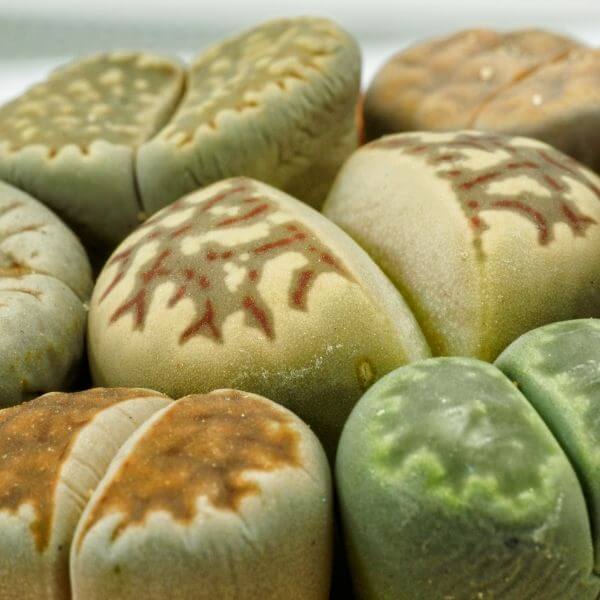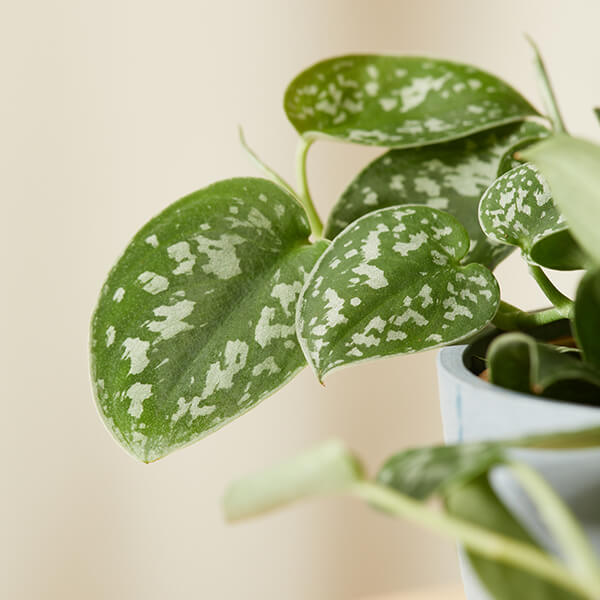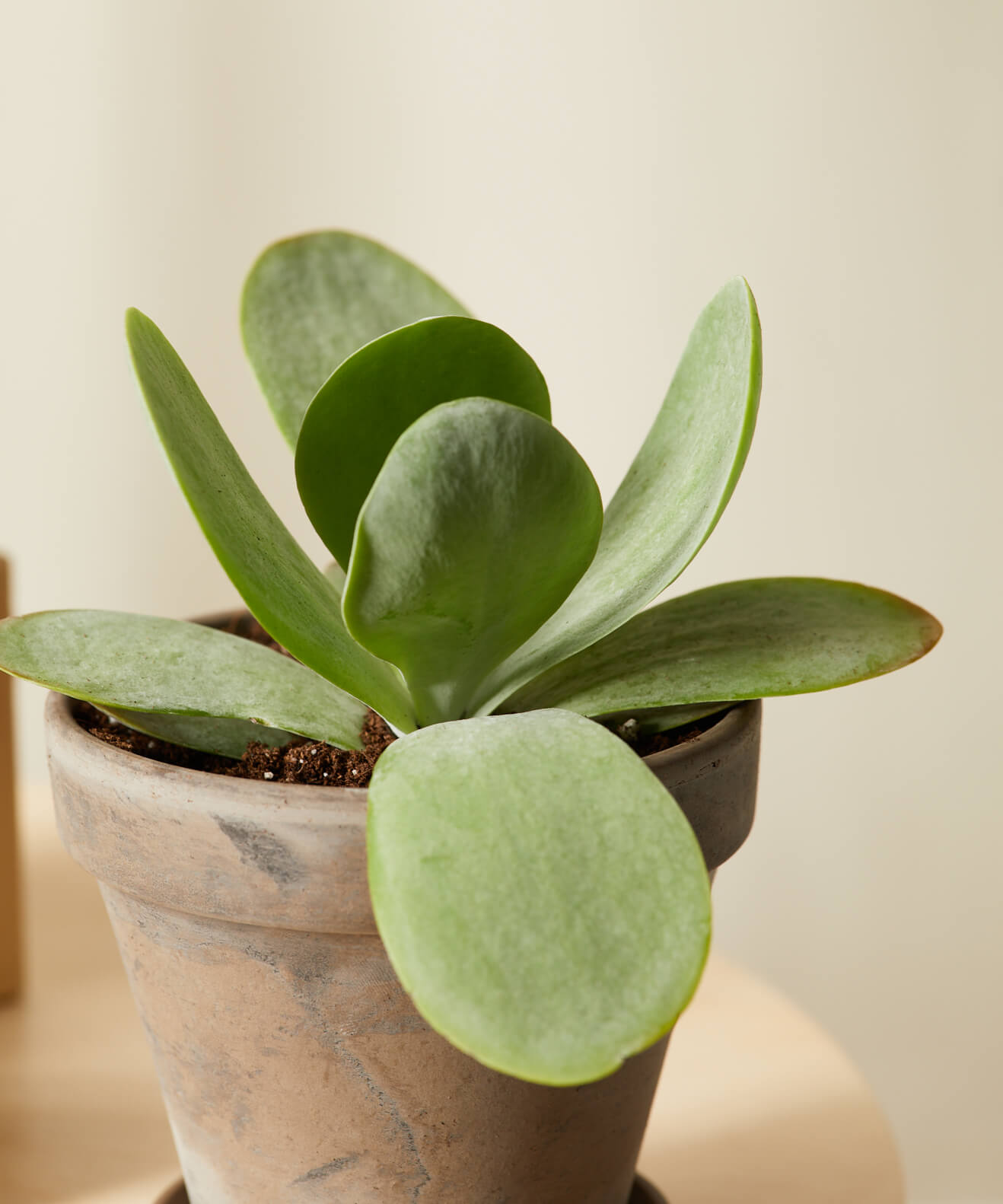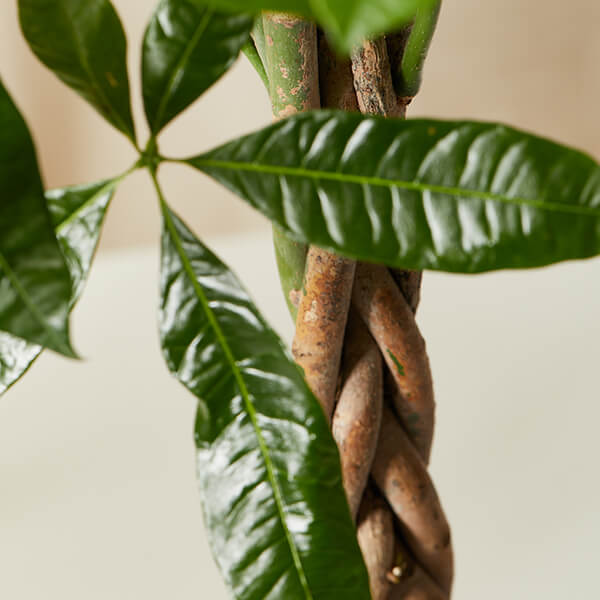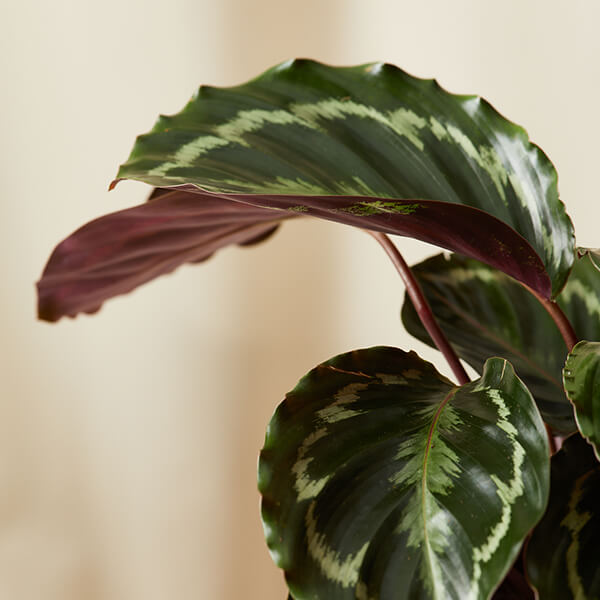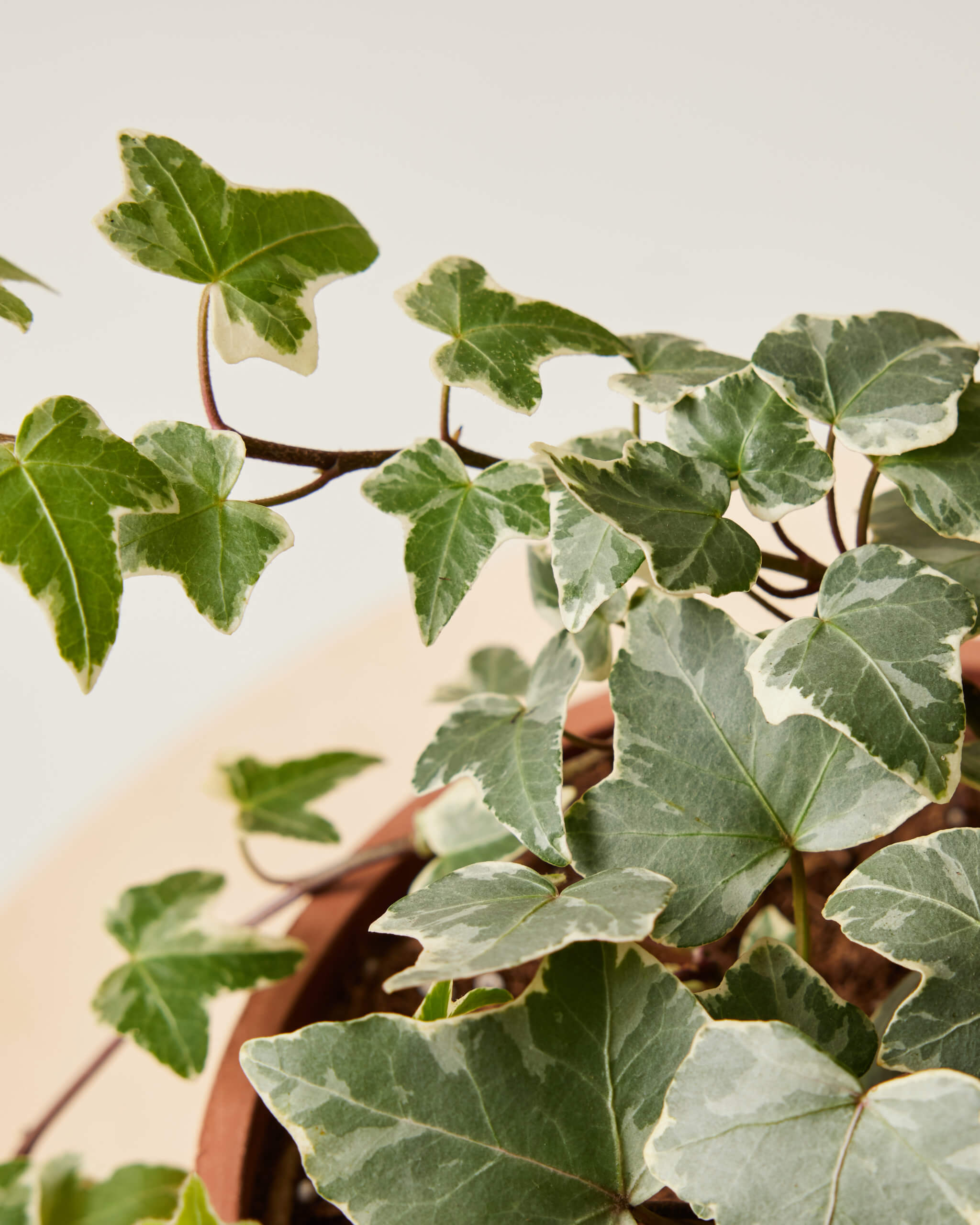Search
119 results found with an empty search
- Gardenia | Plantastic
< Back Gardenia Light: Your Gardenia prefers partial shade, with 4-6 hours of direct sun per day. The soft morning sun is best, so an east-facing exposure is best. Avoid exposure to the harsh afternoon sunlight, which can scorch the delicate blooms. Your Gardenia can also thrive in areas with light shade throughout the day. Water: Water your Gardenia with 50% of the soil volume is dry. Water slowly, allowing it to absorb into the soil until it begins to drip out of the drainage hole. Do not use a saucer outdoors or allow the pot to sit in standing water. Pet-Safe: The Gardenia is considered mildly toxic to pets and humans if ingested. Previous Next
- Spider Plant | Plantastic
< Back Spider Plant Light: Your spider plant can be placed in low to indirect bright light. The more light the plant receives, the bolder the stripes will be. Watch out for too much direct light and it can scorch the leaves. If you don’t have an ideal location for your Spider Plant, use a Grow Light. Water: Water your spider plant when 50-75% of the soil volume is dry. Dry crispy tips often point to underwatering while dark brown tips point to overwatering. Water thoroughly and discard of any excess water in the saucer. Pet-Safe: The Spider Plant is non-toxic and safe for humans, dogs, and cats. Previous Next
- Prayer Plant | Plantastic
< Back Prayer Plant Light: Your Prayer Plant prefers bright, indirect light. Direct sun can cause the leaves to fade and scorch. Water: Water when the soil volume is 25% dry. Water until liquid flows through the drainage hole and discard any that accumulates in the saucer. Pet-Safe: This plant is considered non-toxic and pet-friendly. Previous Next
- Homalomena | Plantastic
< Back Homalomena Light: Your Homalomena likes bright indirect light. They can tolerate lower light, but growth may slow significantly. If kept in direct sunlight, the foliage may burn. Water: Allow the top 50% of the soil of your Homalomena to dry out between watering. They do not like soggy soil, but also do not like to dry out for extended periods of time. Pet-Safe: Your Homalomena is toxic to animals and humans if ingested. Previous Next
- Lithops | Plantastic
< Back Lithops Light: Lithops need a lot of sunlight to thrive. They need 6 hours or more of direct sunlight every day. Place the living stones in a south-facing window and they will be happy. Water: Let 100% of the soil volume dry before watering during the spring and summer. These plants thrive in a dry environment. In the fall and winter, these plants typically go dormant and need little to no water. Water only if the lithops have begun to shrivel up. Pet-Safe: Living stones are non-toxic and safe to have around children and pets. Previous Next
- Pothos | Plantastic
< Back Pothos Light: Your Pothos prefers indirect bright light. It can tolerate lower light, but growth will slow and the colors may fade. Direct light can scorch the leaves. Water: Water when 50-75% of the soil volume is dry. Water until liquid flows through the drainage hole at the bottom of the pot and discard any water that has accumulated in the saucer. Pet-Safe: Your Pothos is considered toxic to humans and pets if ingested. Previous Next
- Kalanchoe | Plantastic
< Back Kalanchoe Light: Place your Kalanchoe in bright light or full sun. It will not thrive if it does not receive enough sunlight. Water: Your Kalanchoe does not need to be watered as frequently as most indoor plants. Water only when the soil is completely dry, or when you notice the leaves starting to shrivel. Water thoroughly so the roots have a chance to soak up the moisture. Make sure there is no standing water left in the saucer, as this can lead to root rot. Pet-Safe: Your Kalanchoe is considered to be toxic to pets. Previous Next
- Money Tree | Plantastic
< Back Money Tree Light: Your Money Tree prefers indirect bright light, and can adjust to lower light. Too much direct light will scorch the leaves, but too little light will cause slow growth and yellow leaves. Rotate your plant monthly to keep growth even. If you are worried you don’t have a spot with enough light, try a grow light. Water: Water your Money Tree when the soil volume is 50-75% dry. Always check the soil moisture before watering. Water thoroughly until you see water flow out of the drainage hole and discard any excess water in the saucer. Pet-Safe: Money Trees are considered non-toxic and pet friendly. Previous Next
- Calathea | Plantastic
< Back Calathea Light: Your Calathea prefers medium to bright indirect light—so placing it in front of an east, west, or north window is ideal. Direct sun burns the leaves and causes the beautiful leaf colors to fade. Water: Water your Calathea when the top 25% of soil is dry. Water until liquid flows through the drainage hole at the bottom of the pot and discard any water that has accumulated in the saucer. Pet-Safe: Your Calathea is non-toxic to cats, dogs, and humans. Previous Next
- Ivy | Plantastic
< Back Ivy Light: Ivy plants prefer bright indirect light but no direct sun as the foliage will burn. In less light, the ivy will become leggy and sparse. Water: Let the top 25-50% of the soil dry out before watering. Allow the water to flow freely from the drainage holes on the bottom of the pot. Always empty the saucer of any water. Ivy does not like its roots constantly wet. Crispy brown leaves indicate over-watering, not under-watering. Pet-Safe: Ivy is mildly toxic to humans and pets. Typically, ingestion will cause mouth and stomach irritation and possible vomiting. Previous Next
